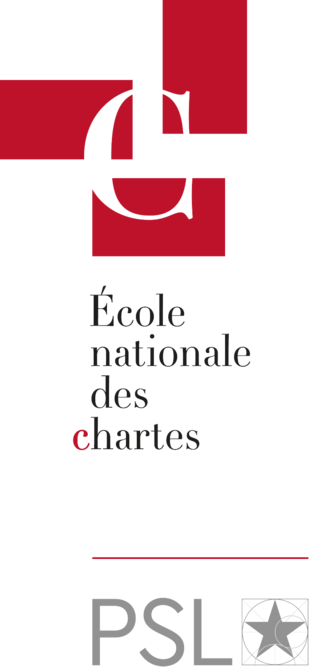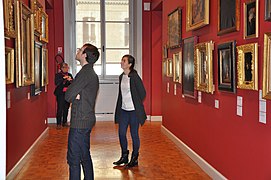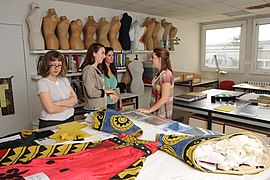
École Centrale de Nantes, or Centrale Nantes, is a grande école - a French engineering school - established in 1919 under the name of Institut Polytechnique de l'Ouest. It delivers Graduate, Master, and PhD Programmes based on the latest scientific and technological developments and the best management practices.

The École nationale d'administration was a French grande école, created in 1945 by President Charles de Gaulle and principal author of the 1958 Constitution Michel Debré, to democratise access to the senior civil service. It was abolished on 31 December 2021 and replaced by the Institut national du service public (INSP).

The École normale supérieure de Lyon is a French grande école located in the city of Lyon. It is one of the four prestigious écoles normales supérieures in France. The school is composed of two academic units— Arts and Sciences— with campuses in Lyon, near the confluence of the Rhône and Saône rivers.

A grande école is a specialised university that is separate from, but parallel and often connected to, the main framework of the French public university system. The grandes écoles offer teaching, research and professional training in single academic fields such as engineering, architecture, business administration, academic research, or public policy and administration. The schools only admit students through an extremely competitive examination process; a significant proportion of their graduates occupy senior positions in French business, academia, civil service and civil society.

A curator is a manager or overseer. When working with cultural organizations, a curator is typically a "collections curator" or an "exhibitions curator", and has multifaceted tasks dependent on the particular institution and its mission. In recent years the role of curator has evolved alongside the changing role of museums, and the term "curator" may designate the head of any given division. More recently, new kinds of curators have started to emerge: "community curators", "literary curators", "digital curators" and "biocurators".
An école normale supérieure or ENS is a type of publicly funded higher education institution in France. A portion of the student body, admitted via a highly-selective competitive examination process, are French civil servants and are known as normaliens. ENSes also offers master's degrees, and can be compared to "Institutes for Advanced Studies". They constitute the top level of research-training education in the French university system.

The University of Toulouse was a university in the French city of Toulouse that was established by papal bull in 1229, making it one of the earliest universities to emerge in Europe. Suppressed during the French Revolution in 1793, it was re-founded in 1896 as part of the reorganization of higher education. It finally disappeared in 1969, giving birth to the three current Toulouse universities: the University Toulouse-I-Capitole, the University Toulouse-II-Jean-Jaurès and the University Toulouse-III-Paul-Sabatier.
Sciences Po Toulouse, or The Institut d'études politiques de Toulouse is one of the nine Institutes of Political Studies of France. Based in the center of Toulouse, France, next to the Université Toulouse 1 Capitole, this highly selective political science grande école was founded by a Decree in 1948 under the name of Institut d'études politiques de l'université de Toulouse. Since 2004 the courses have been 5 years long.
The grands établissements are French public institutions under ministerial charter under the administrative category referred to as Établissements publics à caractère scientifique, culturel et professionnel (EPCSP).

The École nationale supérieure d'informatique et de mathématiques appliquées, or Ensimag, is a prestigious French Grande École located in Grenoble, France. Ensimag is part of the Institut polytechnique de Grenoble. The school is one of the top French engineering institutions and specializes in computer science, applied mathematics and telecommunications.

Toulouse Institute of Technology is a French university cluster based in Toulouse, France, part of University of Toulouse. It was founded in 1969. The institute is composed of seven schools and 17 research laboratories. The institute delivers master's degrees and Ph.D. It is a member of Institut au service du spatial, de ses applications et technologies.

The École Nationale des Chartes is a French grande école and a constituent college of Université PSL, specialising in the historical sciences. It was founded in 1821, and was located initially at the National Archives, and later at the Palais de la Sorbonne. In October 2014, it moved to 65 rue de Richelieu, opposite the Richelieu-Louvois site of the National Library of France. The school is administered by the Ministry of National Education, Higher Education and Research. It holds the status of a grand établissement. Its students, who are recruited by competitive examination and hold the status of trainee civil servant, receive the qualification of archivist-paleographer after completing a thesis. They generally go on to pursue careers as heritage curators in the archive and visual fields, as library curators or as lecturers and researchers in the human and social sciences. In 2005, the school also introduced master's degrees, for which students were recruited based on an application file, and, in 2011, doctorates.

A conservator-restorer is a professional responsible for the preservation of artistic and cultural artifacts, also known as cultural heritage. Conservators possess the expertise to preserve cultural heritage in a way that retains the integrity of the object, building or site, including its historical significance, context and aesthetic or visual aspects. This kind of preservation is done by analyzing and assessing the condition of cultural property, understanding processes and evidence of deterioration, planning collections care or site management strategies that prevent damage, carrying out conservation treatments, and conducting research. A conservator's job is to ensure that the objects in a museum's collection are kept in the best possible condition, as well as to serve the museum's mission to bring art before the public.

Institut Mines-Télécom (IMT) is a French public academic institution dedicated to Higher Education and Research for Innovation in the fields of engineering and digital technology, organized as a Collegiate University. Created in 1996, it was originally known as the "Groupe des écoles des télécommunications", or GET, followed by the "Institut Télécom". The Mines schools, which were placed under the administrative supervision of the Ministry of Industry, joined the Institut in March 2012 when it took on its current name and gained the status of Grand établissement. It combines high academic and scientific legitimacy with a practical proximity to business and a unique positioning in 3 major transformations of the 21st century: Digital Affairs, Energy and Ecology, and Industry. Its training and research for innovation are rolled out in the Mines and Télécom Graduate Schools. The Institut falls under the administrative aegis of the General Council for the Economy, Industry, Energy and Technologies.

The École nationale supérieure d'électrotechnique, d'électronique, d'informatique, d'hydraulique et des télécommunications (ENSEEIHT) is a French engineering school which offers education in Electrical Engineering, Electronics, Computer Science, Hydraulics and Telecommunications.

Bordeaux Institute of Technology- ENSEIRB-MATMECA School of Engineering is a French Engineering Grande École located in Bordeaux and specialized in Electrical Engineering, Electronics, Computer Science, Telecommunications, Mechanical Engineering and Mathematics.

Conservation and restoration of objects made of glass is one aspect of conservation and restoration of cultural heritage. The nature and varying composition of the material, and the variety of types of object made from it, demand certain specialized techniques. The conservator needs to be aware of "agents of deterioration" presenting particular risk to glass objects, and how to prevent or counteract their effects. Relevant education and training is available in certain countries through museums, conservation institutes and universities.

The École des Mines d'Albi was created in 1993. It is a French engineering school part of the Groupe des écoles des mines and joined the Institut Mines-Télécom the first of March 2012. The school is located in the city of Albi on a 22 hectares campus.

The École nationale supérieure de l'énergie, l'eau et l'environnement(Ense3) is one of the engineering schools of the Institut National Polytechnique de Grenoble. As a grande école, students are admitted through a nationwide competitive examination. It was formed by the merger of the École nationale supérieure d'hydraulique et de mécanique de Grenoble (ENSHM) and the École nationale supérieure d'ingénieurs électriciens de Grenoble (ENSIEG).
The National Institute of Administration, is a Syrian government school responsible for the training of civil servants in management and administration. Its main office and training center is located in At-Tal, near Damascus.
Conservation of Earthernware and glassware (metal, glass, ceramic, enamel) - articles in English























